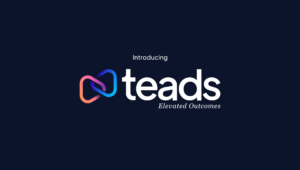Everyone, Especially the Publisher, Wants to Retain Control: Q&A with Massimo de Magistris, GM EMEA, StickyADS.tv
by Lindsay Rowntree on 13th Oct 2016 in News

In association with StickyADS.tv
How has the rise of video changed the way publishers operate? Are they prepared for the ongoing developments in this space? Speaking with ExchangeWire, Massimo de Magistris (pictured below), GM EMEA, StickyADS.tv, explains how publishers are evolving to meet the growing demands of advertisers, but there is still a long road ahead.
ExchangeWire: There are significant technological advances in programmatic video as a platform. It is evolving all the time – are publishers paying enough attention to these advances?
Massimo de Magistris: It’s a very good question and, of course, I don’t want to be too negative, but the honest answer is, no, they don’t pay enough attention to these developments. As always, there are a few exceptions, but they do have a good excuse. When it comes to programmatic, technology grows quickly and, on the publisher side, there is mostly no available time or resource to keep up with this development. Ad tech is becoming a critical asset and all publishers, especially those that embrace it and make it the top of their monetisation strategy, are changing the way they manage ad tech internally. For example, ad tech is mostly managed by traffic managers and the CTO only becomes involved to buy licenses or hardware; but when it comes to the service offering, sometimes marketing is happy to take ownership of those relationships, as they think IT shouldn’t be involved. As a result, many activities and tasks are performed by the marketing and sales teams. Sales teams can lack dedicated technology resources. Fundamentally, it is just a matter of resources – moving focus from technology as a server and a commodity, and in programmatic, it isn’t a commodity. Technology impacts revenue and, as a result, it should deserve more resources and more time dedicated to understanding how tech can help with inventory monetisation.
What is the most commonly overlooked element in publisher video strategies?
There’s a very important strategic element. For example, publishers sometimes set up Deal IDs in programmatic and blame the technology for not working correctly if the buyers aren’t buying inventory. Actually, it’s more the case that the technology is working well, but the buyers don’t want the inventory. The control has shifted from the publisher to the buyer, from supply to demand. There are many ways to push sales in the direction you want to achieve your goal; but when it comes to programmatic, it’s totally different – the buyer sets up demand on their own platforms, choosing what they want, and the price they want to pay. The publisher has to dramatically change their approach to how they expose inventory to the buyer. The supply-side needs to keep up with what the demand-side wants, rather than the old-style approach – you have to sell inventory buyers want to buy. It’s a widespread issue, but it's normal and is part of the learning process of the programmatic ecosystem. It’s not surprising, given that the way the demand-side buys has changed. Everyone, especially the publisher, wants to retain control; but everyone also wants to retain the benefits of features that programmatic brings to the table. It’s quite common, but at some point publishers will get used to it and understand how to package inventory for buyers, while at the same time meeting demand.
How are viewer trends changing and are publishers quick enough to adapt to them?

Massimo de Magistris, GM EMEA, StickyADS.tv
Content consumption is becoming more fragmented. Technology-driven consumption is represented by multiple devices, which everybody is using to access content. It’s technology-driven on one side and socially-driven on the other side – there are now many more places where video content can be accessed. Not all publishers, in my opinion, are able to adapt to those trends, but every publisher should focus on premium vertical content, which buyers are looking for and viewers are willing to view. New platforms, such as Snapchat, Periscope, and Facebook Live, should be a positive for the industry – but, at the same time, should not represent a distraction for the publishers from building their own content. Fragmentation is not an issue, as long as the publisher keeps a focus on the content. We shouldn’t forget in-video, high-quality, premium inventory works. This is not a display world. In video, high-quality pre-roll is very rare.
If you look at the top publishers in our platforms, which are broadcasters, for some of our customers, especially in France, there is very high competition to win that inventory. This means that the price goes up. This is good evidence of how important the content is for buyers. As a publisher, I would want to understand the context behind a video view – how willing and interested users are in that kind of video; and traditional broadcasters are those in the best position to offer what the viewer wants. The same applies to small video digital players that focus on very specific vertical content – it’s very niche, high-quality content, which works well and viewers spend a lot of time on it, which is what buyers want. It’s not about what the user is willing to buy based on what’s available, but what the buyer wants to buy based on what their viewers want to watch, and that’s what publishers must cater to.
What measurement challenges exist within video advertising across multiple platforms? What should success look like?
Measurement in the digital space has always been a challenge, and for one simple reason: there are many ways to measure data, as well as vast volumes of data coming from many sources. Frankly speaking, I don’t believe we will have one single set of measurement metrics. I’m expecting to see a different set of metrics in different countries, depending on relevance in each market. But, ultimately, when it comes to measurement, what is really important is having a set of data, which basically provides the buyer with confidence that the money they spend on advertising equates to their goals being reached. For that reason, I expect measurement to be driven by the buy-side, especially DSPs. Publishers can try to drive the agenda, but I don’t expect them to be winners in the space, but instead to support the buyers. Once again, everyone is looking for their own set of measurements. Metrics will become very specific. The opportunity to access massive amounts of data, and turn it into something actionable, will be the basics of what will drive measurement.
Given how ‘video advertising’ encompasses multiple formats across multiple screens – what will the term mean in five years' time?
What will happen in one year is much easier to predict than what will happen in five years’ time. For example, less than three years ago, programmatic didn’t exist in Europe. It’s incredible how fast technology develops. I think, in the short term, we will see publishers try to recover some control, which they are today realising they are slowly losing. It’s especially starting in markets where, today, publishers have the local power, for example in Germany. A way of doing this will be with programmatic guaranteed, which isn’t programmatic, as it isn’t fully automated, but it is a way to bridge between buyers and publishers. With programmatic guaranteed, there is a lot of offline conversation that goes above and beyond what the machine can do, but it is addressing publisher concerns. In the next 12 months I expect to see more programmatic guaranteed-style functionalities – they give both parties more control in using and adopting new technologies. In a couple of years we’ll see the introduction of platform functionalities to bridge the gap between point a and point b, trying to find the compromise between supply and demand.
The Deal ID is basically not programmatic, as it goes against the idea of RTB – there is no bid environment. So, from that perspective, it’s not programmatic; but it does assure both parties and if this approach helps both parties be confident in using the tool and build resources and tech around this way of transacting, then that’s fine, as we can’t forget that programmatic means new skills. Programmatic is great, as it brings new features, but it doesn’t happen overnight. Just signing a new contract for an SSP/DSP won’t generate efficiency – a full system approach around that platform is required, and that takes time.
DisplayMonetisationPublisherVideo








Follow ExchangeWire